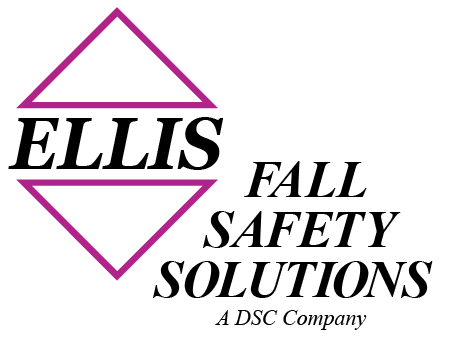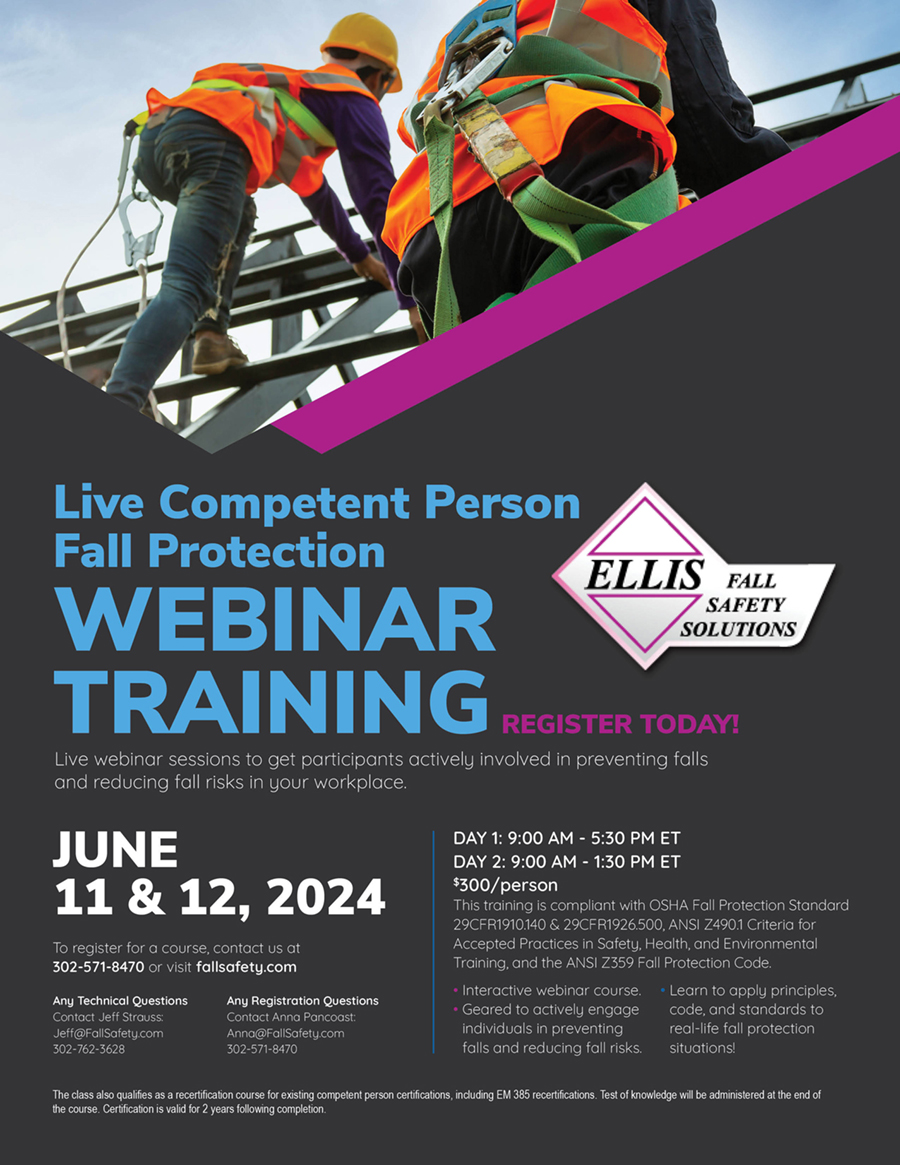Tip of the Week No. 228 – 11/17/08 – Descent Devices
Separate, emergency descent devices are required on suspended scaffolds whre power failure is anticipated – for example, on an air-powered scaffold with air-powered breathing equipment used for painting a water tower.
Failure could expose workers to asphyxiation from paint solvent fumes unless an emergency escape, controlled descent device is ready for use.
See “Introduction to Fall Protection, 3rd Edition” page 148.
This book is an invaluable resource for every safety manager’s library. Click here to find out about ordering a copy. Order online now.
Tip of the Week No. 200 – 03/10/08 – Descent Devices
There are two types of descent devices:automatically controlled devices, which are controlled by a maximum lowering speed inherent in the device, and manually operated lowering devices, which require user-control at all times. Both types must have an overhead anchorage point.
See “Introduction to Fall Protection, 3rd Edition” page 258.
This book is an invaluable resource for every safety manager’s library. Click here to find out about ordering a copy. Order online now.
Tip of the Week No. 186 – 11/19/07 – Descent Devices
Descent devices installed at roof level may be used over parapets if an acceptable access means is provided.
If little or no parapet exists, the cable or rope loadline will lie across the edge of the structure as the descent progresses. This hazard (cutting edge and low anchorage, effective access) can be reduced by the use of a “Controlled Descent Apparatus” (CDA) that regulates the rooftop use of these systems and requires strength for use similar to suspeneded scaffolds.
See “Introduction to Fall Protection, 3rd Edition” page 194.
This book is an invaluable resource for every safety manager’s library. Click here to find out about ordering a copy. Order online now.
Tip of the Week No. 267 – 12/28/09 – Controlled Descent System
A typical controlled descent system incorporates a pulley mechanism equipped with a centrifugal brake. The escape belt is slipped over the head and under the arms and pulled tight to the chest with a buckle.
The return cable is held initially during launch and provides the full control needed by the escapee to steady himself. A second escape belt at the opposite end of the cable returns automatically for the next user, providing continuous individual escapes without manual adjustment.
See “Introduction to Fall Protection, 3rd Edition” page 259.
This book is an invaluable resource for every safety manager’s library. Click here to find out about ordering a copy. Order online now.
Tip of the Week No. 274 – 03/01/10 – Descent Devices
A device that can provide an automatically controlled rate of descent, regardless of worker or counterbalance weight, can provide more reliability than simple pulley systems.
See “Introduction to Fall Protection, 3rd Edition” page 252.
This book is an invaluable resource for every safety manager’s library. Click here to find out about ordering a copy. Order online now.
Tip of the Week No. 289 – 07/26/10 – Descent Devices
Separate, emergency descent devices are required on suspended scaffolds where power failure is anticipated – for example, on an air-powered scaffold wiht air-powered breathing equipment used for painting a water tower.
Failure could expose the workers to asphyxiation from paint solvent fumes unless an emergency escape, controlled descent device is ready for use.
See “Introduction to Fall Protection, 3rd Edition” page 148.
This book is an invaluable resource for every safety manager’s library. Click here to find out about ordering a copy. Order online now.
Tip of the Week No. 297 – 10/04/10 – Descent Devices
Where there is sudden danger from fire below the escape point or from the effect of a blast, angled escape away from the structure via an angled guide cable or chute affords more personal protection than a vertical descent system.
Vertical descent devices, however, can be hooked up to these angled cables. Steady descent speeds of 10-12 feet per second are preferred for angled descent, and automatic speed-limiting descent systems provide the necessary, predictable performance for a reliable touchdown that enables the escapee to continue to move away.
See “Introduction to Fall Protection, 3rd Edition” page 260.
This book is an invaluable resource for every safety manager’s library. Click here to find out about ordering a copy. Order online now.
Tip of the Week No. 300 – 11/01/2010 – Rigger Belt
The saddle belt, also referred to as a tree trimmer’s or rigger’s belt, is equipped with an extra subpelvic strap that is designed to provide support during climbing or positioning. The user is cradled in a relatively convenient sitting position for working for short periods or for suspension during emergency descent.
See “Introduction to Fall Protection, 3rd Edition” page 156.
This book is an invaluable resource for every safety manager’s library. Click here to find out about ordering a copy. Order online now.
Please select a category from the list below
- Aerial Lifts/Platforms
- Anchorage Points
- Calculations
- Construction Contracts
- Consulting
- Cranes
- Descent Devices
- Ellis Articles
- Ellis Presentations
- Equipment Maintenance
- Ergonomics/Human Factors
- Fall/Safety Statistics
- FP systems, programs
- Guardrails
- Harnesses, FP Equipment, HLL, SRL
- Hazards
- Holes/Pits
- Ladders
- Lanyards/Twin Tail Lanyards
- Misc.
- Nets
- New
- NIOSH
- OSHA News/Citations
- PFAS
- Rescue
- Roofs
- Ropes
- Safety Cases
- Safety Organizations
- Scaffolds
- Skylights
- Stairs
- Standard/Regulations
- Steel Erection
- Tanks
- Towers
- Training
- Tree Stands
- Trucks
- Tying Off
- Veterans of Safety
- Window Cleaners
- Workers Comp

